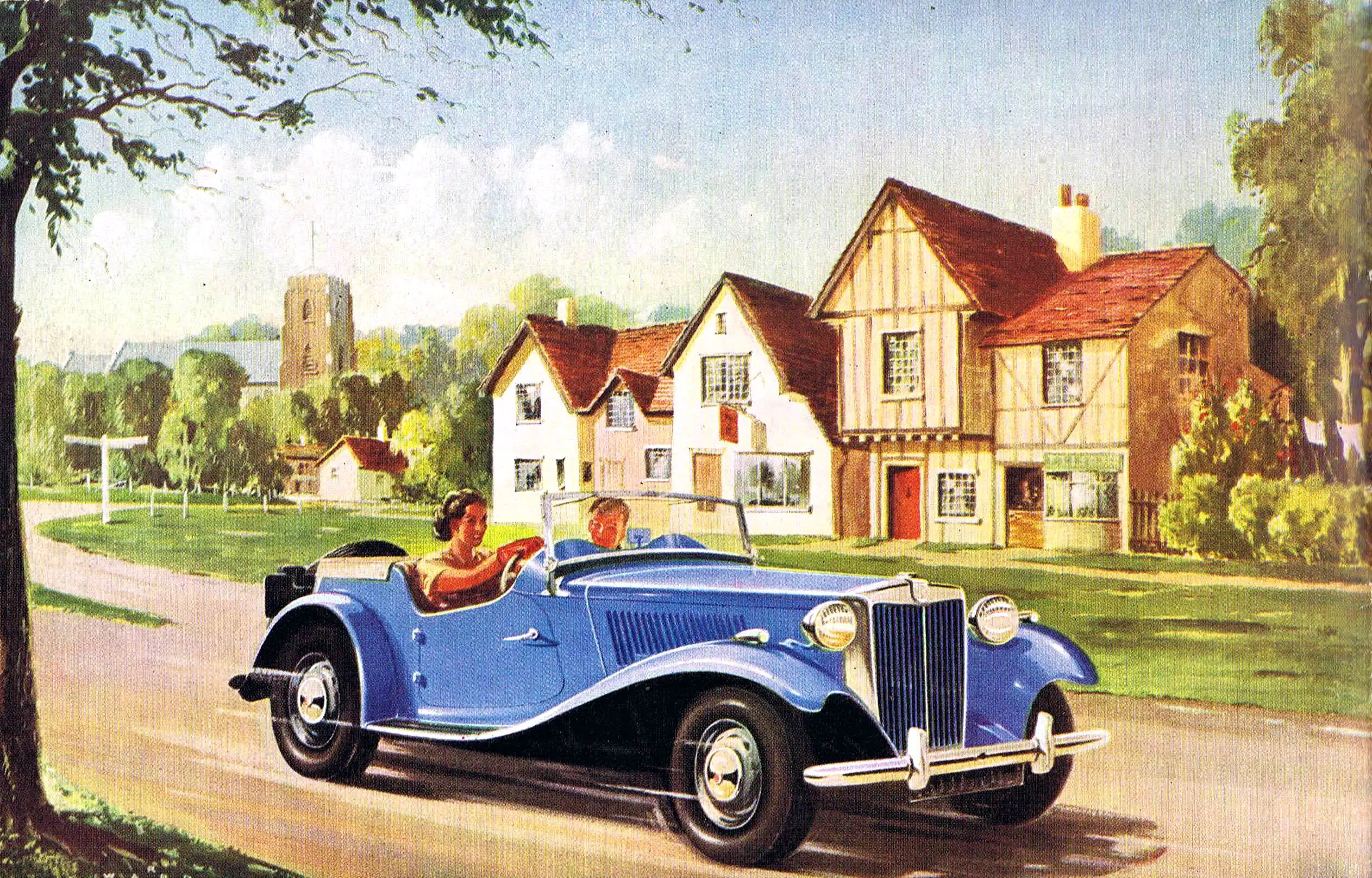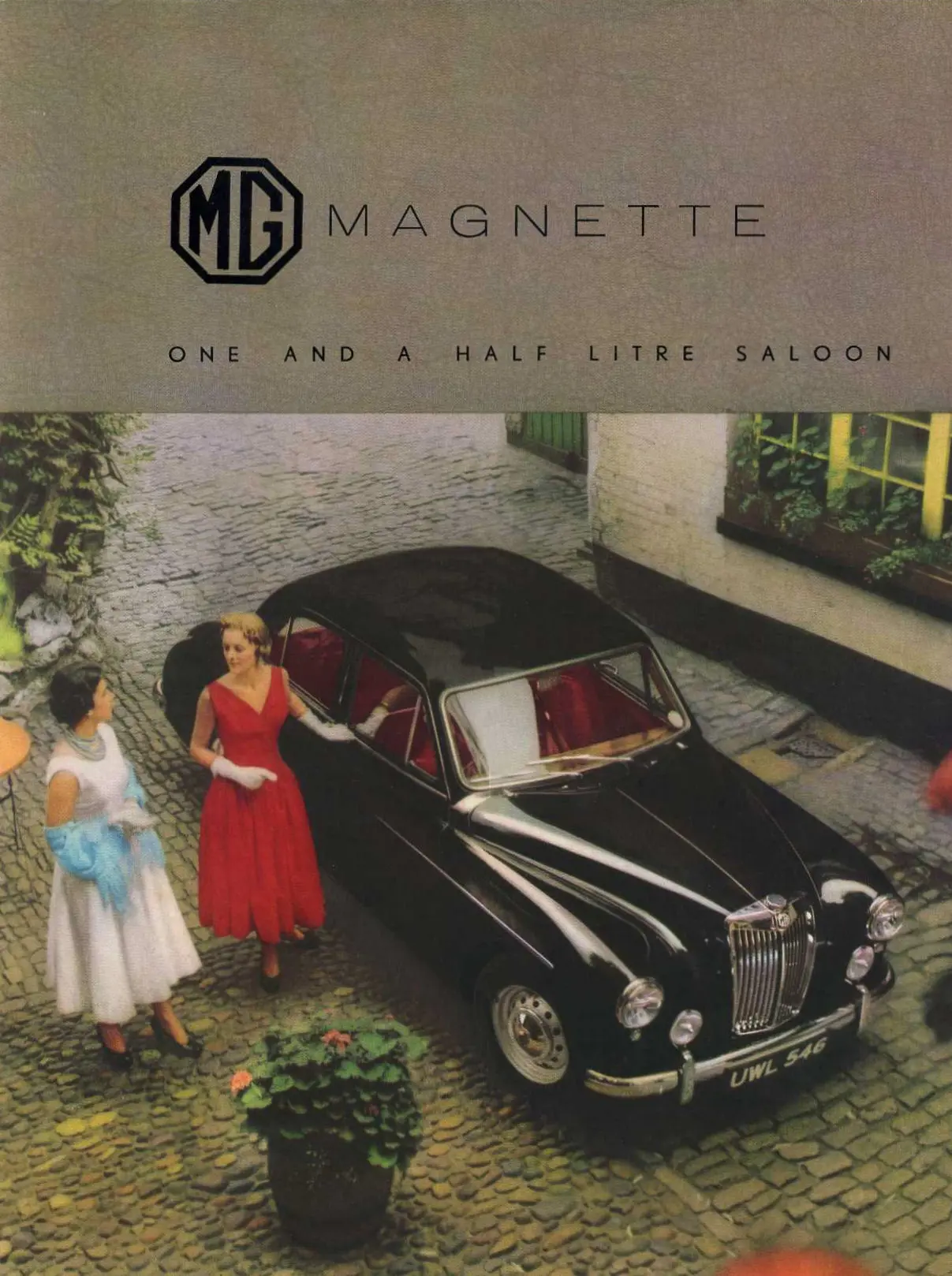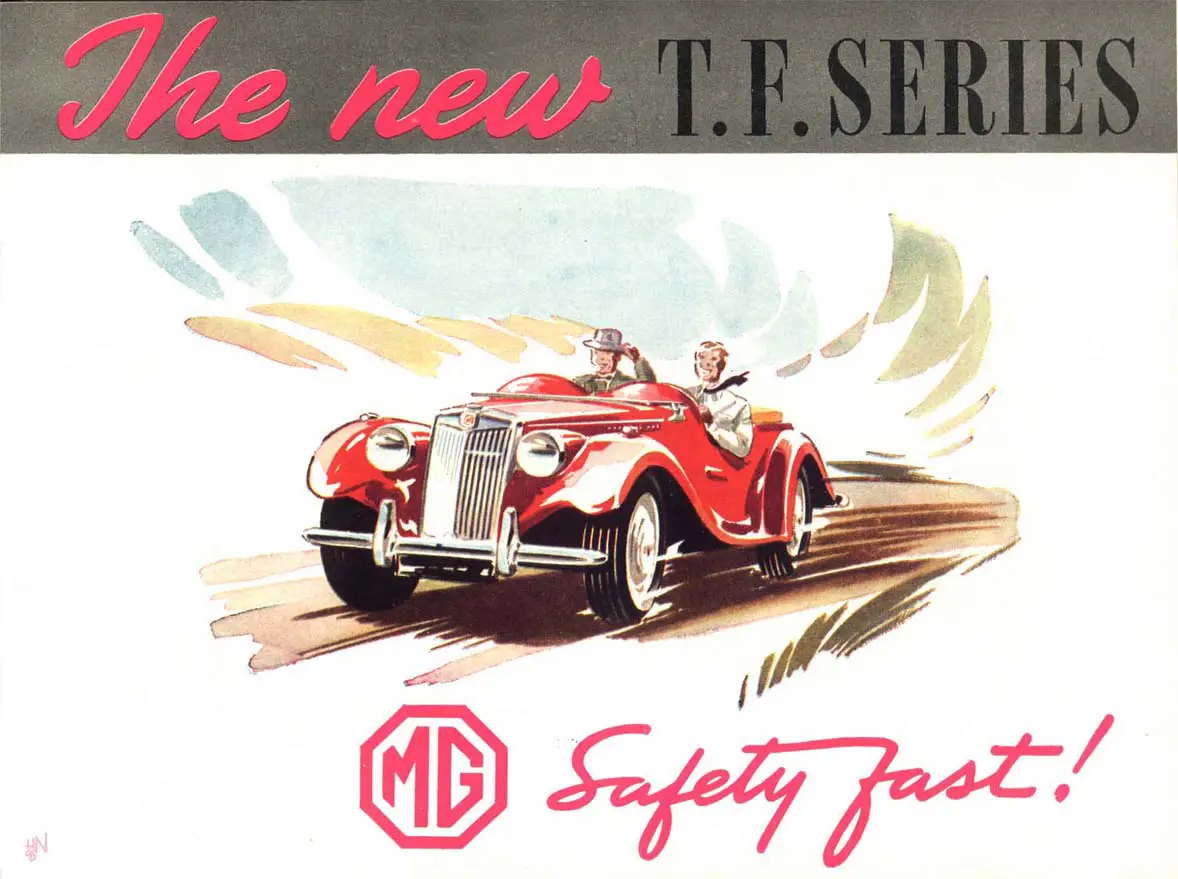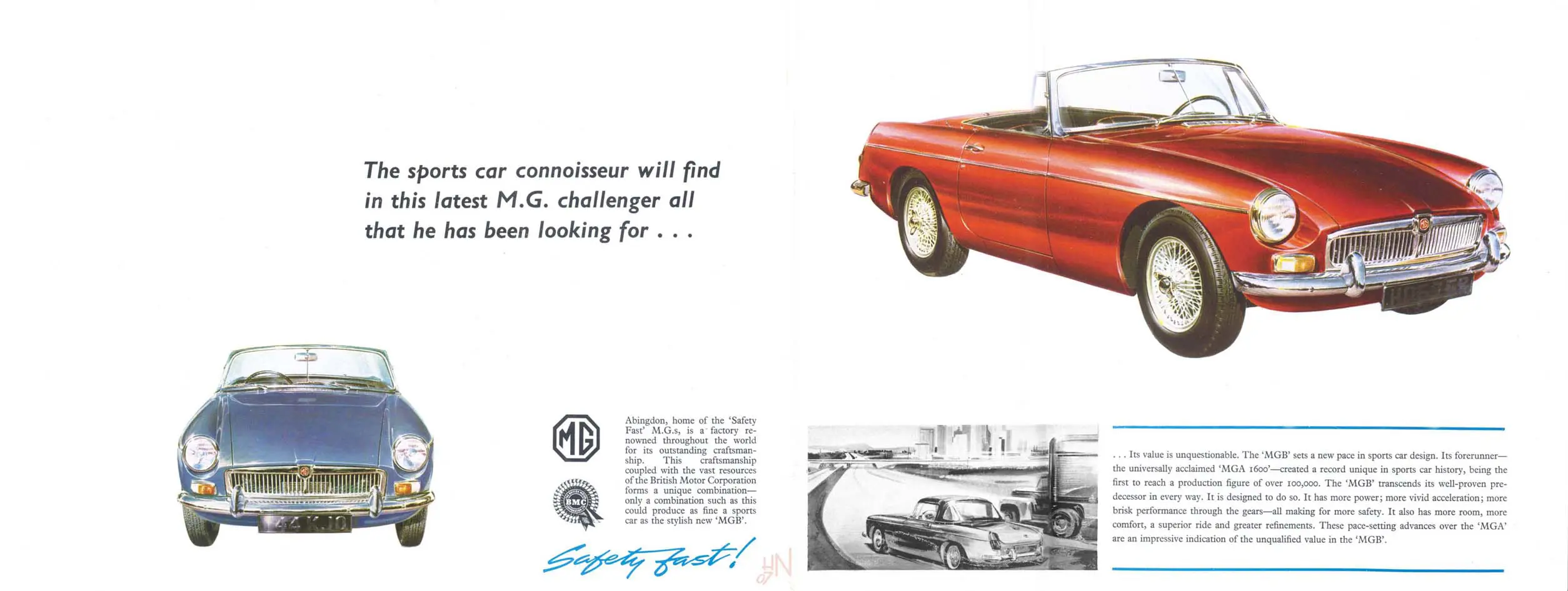100 YEARS OF MG – AND 100 MG FACTS
08 June 2023
In 1923, William Morris permitted Cecil Kimber, the General Manager of Morris Garages of Queen Street in Oxford, to build sporting versions of Morris cars. That August, the company registered the first six MG Super Sports. And so, to celebrate 100 years of MG, here are 100 facts:
- An advertisement for the ‘Super Sports Morris’ in The Isis on 23 November 1923 displayed the octagon logo.
- The advert above stated: ‘The Super Sports cost a very reasonable £350, so why not call Oxford 942 to arrange a test drive?’
- Morris Garages registered the MG octagon as a trademark on 1 May 1924.
- MG launched the 14/28 Super Sport that year. It is derived from the Morris Oxford.
- ‘Old Number One’, the first competition MG, made its bow at the 1925 Lands End Trials.
- 1928 saw the establishment of MG Car Company, a separate entity from Morris Motors.
- In that same year, the 18/80 became the first MG to bear the distinctive ‘split radiator’ and the first with an in-house designed chassis.
- The 2.4-litre MG Six appeared at the 1928 London Motor Show.
- In 1929, MG production commenced at a former leather factory in Abingdon.
- 1929 also marked the launch of the M-Type Midget.
- Edsel Ford was the first high-profile US MG owner with his yellow Midget.
- MG’s telephone number was Abingdon 251.

- In 1930 the EX120 racer achieved 87.3mph.
- In August 1930, Motor Sport observed MG’s output is such “that they are able to claim to be the largest manufacturers of sports cars in England”.
- Lancashire Constabulary started deploying MGs in 1932 with a batch of six J2 Midgets.
- The K3 Magnette scored a class victory in the 1933 Mille Miglia and the Team Prize.
- The first ‘’T-Type’ Midget debuted in 1936.
- November 1938 saw the EX135 racer achieve 187.6mph on an autobahn near Frankfurt.
- In that same year, MG’s last pre-war car, the WA, was also their largest model to date.
- By the outbreak of the Second World War, total MG production to date amounted to 18,664 cars.
- In 1946, MG commenced official US exports, initially selling 20 TCs via their distributors.
- The great motoring writer Tom McCahill of Mechanix Illustrated thought the TC a “debonair little aristocrat” that looks “sporty, expensive and as intriguing as a night on the Orient Express”.
- The 1947 MG Y saloon was the first Nuffield Group car fitted with rack and pinion steering.
- That same year, the Californian Jeep dealer Kjell Qvale was so impressed by a TC he spotted in New Orleans that he obtained MG distribution rights for the West Coast. Qvale is now believed to have almost singlehandedly ignited the British sports car boom in the States.
- The 1950-model TD was a response to the demands of MG’s North American customers, namely extra power, slightly more in the way of comfort and, crucially, left hand drive.
- MG exported 75% of TD production to North America.
- In 1953 the Magnette ZA was the first MG with monocoque bodywork and the first to use the British Motor Corporation’s 1.5-litre ‘B-series’ unit.
- The Magnette’s designer Gerald Palmer later reflected: “I had been to several Continental shows and had realised that some Italian styles were really wonderful. British styling, by comparison, was just pathetic”.

- MG launched the TF in 1953; one journalist grumbles that it resembled “a TD with the front pushed in”.
- Road & Track was more positive about the TF: “To drive an MG is sheer pleasure”.

- Despite its appearance, the ZA shared only a few panels with its Wolseley 4/44 stablemate.
- Mr McCahill referred to the ZA as “an eyeful of Continental intrigue and good looks”.
- The MGA debuted in 1955; it proved so popular that Abingdon built more than 13,000 in its first year of production, exceeding the total output of the TC.
- Motor Sport believed the MGA possessed “an eye-stopping appearance”.
- In 1956 the ZB replaced the Magnette ZA. The price was £1,072 7s.
- The Motor described the ZB as “one of the most charming and attractive small cars that has come into our hands”.
- Abingdon created several “Constabulary” specification modifications for the A, including the dynamo from the BMC C-Series engine and heavy-duty batteries.
- In 1957 an excited journalist said: “It is no reflection on their character to say that these women of Lancashire County Force are ‘fast’. They are equipped with MG sports cars, capable of 100 miles an hour, as the first women drivers in the traffic patrol branch”.
- The 100,000 MG departed Abingdon in 1956.
- The MGA eventually became the world’s first sports car to sell more than 100,000.

- In 1956 Abingdon planned Project EX202, a Magnette powered by the Austin A90 Westminster’s 2-6 litre C-series unit, but this sadly never entered production.
- The supercharged EX181 broke the Land Speed Record on the Bonneville Salt Flats in 1957.
- The 1958 MGA Twin-Cam cost £1,265 17s, or £1,357 7s for the hardtop version.
- The Twin-Cam’s top speed was 114 mph, capable of 0-60 in under 14 seconds.
- Abingdon claimed of the MGA Twin-Cam “Performance of this order usually costs twice the money!”.
- The Pininfarina-styled Magnette Mk. III replaced the Z-series in 1959.
- One Magnette ‘Farina’ advertisement claims it possessed “The Spirit and Joy of a True MG”.
- By 1965 MG ambitiously claimed a pedigree for the facelifted Magnette Mk. VI from the pre-war K3 - “Breeding counts”.
- In 1961 MG revived the Midget name for their version of the Austin-Healey Sprite Mk. II.
- The Midget cost £689 5s 11d, £30 more than the Sprite.
- When developing the MGB, Abingdon considered using MGA Twin-Cam engine.
- On launch day, 20 September 1962, the MGB cost £949 15s 3d.

- On 2 October 1962 the 1100 became MG’s first front-wheel drive product.
- In 1963, a motoring writer who was possibly in urgent need of a holiday stated of the Midget: “Young blood, provided it flows red, has always craved for excitement, and the dream of cutting a dash in a fast, sleek sports car is healthy and virile”.
- In late 1964 BMC rebadged the Vanden Plas Princess 1100 as the ‘MG Princess’ for the US market. Sales amount to only 154 units
- The MGB GT made its bow in 1965 and increased B sales by more than 40%.
- In the late 1960s, the Libyan Police deployed MGB Roadster patrol cars.
- In the 1960s, Abingdon devised the Pininfarina-bodied EX234, a B and Midget replacement with Hydrolastic suspension. The BMC/Leyland seemed to have resulted in its demise.
- BMC originally considered making an ‘Austin-Healey Mk. IV’ version of the MGC.
- When the MGC debuted in 1967, a heater was still £15 1s 2d extra.
- The then Prince of Wales drove a Mineral Blue MGC GT, registration SGY 766F.
- In 1968 Authi of Spain introduced the locally-built MG 1100.
- 1969 saw the launch of a GRP-bodied MG 1300 made in Chile
- Back in the UK, Autocar thought the MG 1300 Mk, II was “refined and gentlemanly and will serve equally well the enthusiastic driver and his not-so-enthusiastic wife”.
- At the end of the 1960s MG devised the ADO21, a mid-engine B replacement. It sadly fell victim to corporate politics.
- A red MGB GT became Abingdon’s 250,000 car in 1971.
- The 1973 MGB GT V8 featured uprated suspension that was raised by one inch, brakes with larger front callipers and alloy wheels.
- MG only offered the 3.5-litre engine with the GT, as the Roadster lacked body rigidity.
- According to MG, the V8 was “a unique combination of timeless good looks, high geared and effortless long distance travel, superb road-holding and handling. It is a thoroughbred Grand Touring car for the enthusiast who demands performance without having to work for it”.
- The police on the M1 deployed an orange GT V8, registration TBH 355 M - Motor Sport regarded the use of such unmarked MGs as “sneaky”.
- In 1974 the limited-edition MGB GT Jubilee was finished in British Racing Green with gold stripes.
- That same year MG became the first British manufacturer to produce a car designed to meet the new US Federal regulations on impact protection.
- The millionth car, a green MGB Roadster, departed Abingdon in 1975.
- At once point the MGB was the world’s best-selling sports car.
- A consortium of businessmen, led by Alan Curtis of Aston Martin Lagonda, entered into discussions with BL to buy the Abingdon factory for £30million after the 1979 announcement of its impending closure. The group hoped to build a facelifted MGB, but their plan never reached fruition.
- The final car to be made at the Abingdon factory on the 23 October 1980 was an MGB GT.
- The MG name was revived in May 1982 with the Metro 1300.
- British Leyland’s CEO Sir Michael Edwardes proudly stated: “The MG name is now proudly back on a BL product, and happily the MG Metro has been accepted by fiercely loyal MG enthusiasts as being in the MG tradition”.

- The MG Metro Turbo starred at the 1982 Motor Show, intriguing visitors to the NEC with its Lotus Engineering assisted design and Garrett T3 turbocharger.
- The Metro Turbo was capable of 112 mph.
- On the 1 March 1983, the new MG Maestro cost £6,425.
- Together with the Vanden Plas version, the MG Maestro boasted a solid-state digital facia with a voice synthesiser that spoke in the dulcet tones of the actress Nicolette Mackenzie.
- The MG Montego made its bow in July 1984.
- April 1985 marked the launch of the MG Montego Turbo with a top speed of 126 mph.
- Further MG news for 1985 was the Metro 6R4, made with the assistance of Williams GP Engineering.
- 6R4 stands for ‘6 cylinders, R for rally, four-wheel drive’, with power from specially designed 2,997cc V6 engine.
- The MG EX-E concept car was a star of the 1985 Frankfurt Motor Show.
- Austin-Rover also planned a new generation Midget, based on the AR6 floorplan, but it sadly never entered production.
- When the MG Maestro Turbo debuted at the 1988 British International Motor Show, it was the fastest production car yet to wear the octagon badge.
- The Maestro Turbo’s top speed was 129 mph and the advertisements boasted it was “Faster than a Ferrari, a Porsche, a Lamborghini, a Lotus, an Aston...”.
- In 1992 the MG RV8 conveyed the spirt of the MGB for the late 20th
- The RV8 used the 3.9-litre Rover V8 engine and its price was £26,500.
- September 1995 saw the long-awaited return of mass-produced MG sports cars with the MGF.
- The original MGF had the 1,796cc K series engine, mounted behind the seats.
- In 2001 the ZT saloon and ZTT tourer arguably saw the first return to MG-badged large prestige cars since the SA/VA/WA era.
- The ZR105 made its bow in 2001 and went on to become the UK’s top selling small sporting hatchback.
- The MG Express version of the ZR105 was a rare Octagon-badged commercial vehicle.
- In 2002 MG revived the TF name for a new model that became the UK’s most popular two-seater sports car.
- 2003 saw the launch of the very desirable 4.6-litre ZT and ZTT 260, with a 155mph top speed.
- And the story continues - https://www.mg.co.uk/
